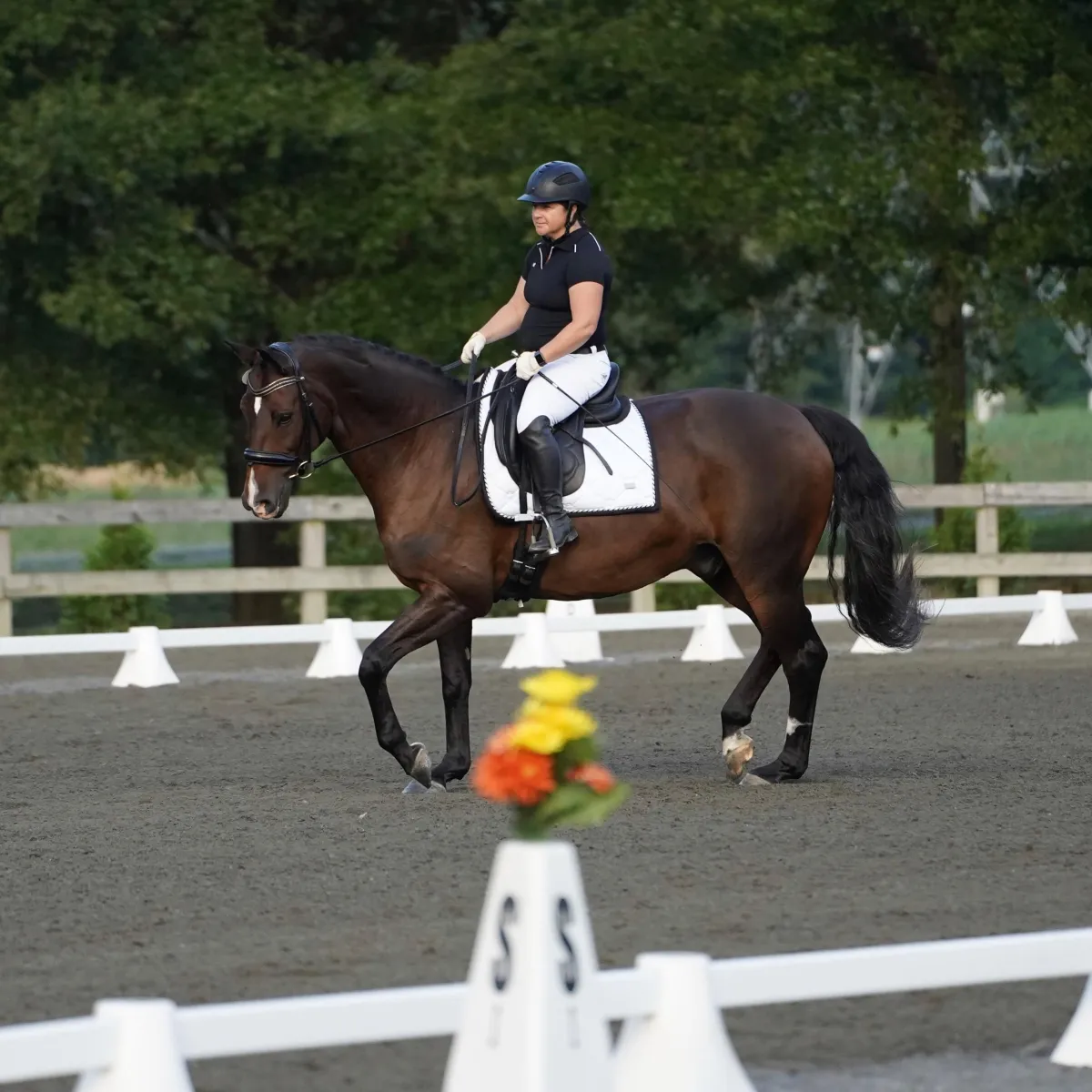
The Illusion of Control in Dressage
“You can’t control the wind, but you can adjust your sails.” – Unknown
Why Force Fails and Feel Wins
We tend to think of force in riding as something obvious—pulling on reins, kicking hard, using big corrections and whips. But force can be far more subtle. In fact, the most damaging kind of force is often the quiet kind. The kind that looks polished and controlled from the outside, but feels rigid, braced, and disconnected on the inside.
I want to challenge your idea of what “control” really means in the saddle—and offer a different path. One that trades force for feel, and control for connection.
Let’s get nerdy for a second. In physics, force is defined as any influence that changes the motion of a body or creates stress in a stationary one. Think about that: force is anything that disrupts natural motion or introduces stress.
So when we use our reins to “hold” our horse in a frame, or use our seat to brace ourselves, we’re introducing force. Even if it feels subtle. Even if it looks correct. Even if we’re just trying to “do it right.”
Want to sit the trot and find yourself locking your back or clenching your thighs? That’s force. Want to keep your horse round and end up holding the reins just a little tighter than needed? Also force.
And here’s the kicker: the more energy you want to create, the more mass and acceleration involved, the more force you’re likely using. How does that feel in your body? In your horse’s?
Force isn’t always big or ugly—it’s often quiet, polished, and completely at odds with feel.
Let’s talk about the word holding. It’s everywhere in horse training. “Hold the frame.” “Hold your position.” “Hold it together.”
But here’s the truth: you can’t actually hold anything in motion without creating resistance. And resistance is the enemy of rhythm. When we “hold” a good moment instead of riding it forward, we’re breaking the very thing we’re trying to preserve.
Instead of holding, what if we noticed the moment, enjoyed it, and then practiced finding it again when we lost it? What if we aimed for maintaining while enjoying, not gripping?
Holding = force.
Maintaining = feel.
Let’s talk real talk. Most perfectionist riders crave control because it feels safe. Predictable. Like we’re doing our job well. But control has a cost.
For riders, control:
Creates anxiety and mental pressure to “get it right”
Fuels hyper-awareness of how we look instead of how we feel
Reinforces the need to “hold it all together”
Blocks the flow state that leads to real connection
For horses, control:
Leads to tension, confusion, or shutdown
Makes them anticipate pressure instead of trust softness
Can feel like punishment—even when it’s subtle
Control might feel like safety, but it isn’t where growth or softness happens.
Let’s break it down:
Riding with feel means noticing your horse’s rhythm and adjusting with it—not overriding it. It means being open to what your horse is offering, not micromanaging their every step. It doesn't mean accepting everything they offer. It just means you acknowledge it and get curious about how to change it. How to make it easier, not how to hold it together.
It means letting go of the idea that you must hold the right shape, gait, or posture. Instead, you ride into it, lose it, and return to it with more grace each time.
Because here’s the truth:feel makes horses curious and willing. Force makes them brace or check out.
A Simple Experiment: Ride the Rhythm
Want to try it? Here’s a simple experiment to help you explore feel and rhythm—whether you’re riding, hand grazing, or just visualizing:
Start at the walk on a loose rein or soft contact.
Instead of shaping your horse, notice their natural rhythm.
Match your breathing and seat to that rhythm.
If your horse changes—speeding up, slowing down, hesitating—don’t correct. Get curious.
Feel tension in your body? Soften just one thing—shoulders, jaw, hips—and watch what your horse does.
Breathe. Observe. Let go of outcomes.
When you're comfortable doing this, start changing just one thing and see what happens. Can you do it again? What did you notice?
This practice rewires your nervous system to notice instead of control. And that shift? That’s where partnership begins.
Final Takeaways
✨ What you feel is more important than how it looks.
✨ Every time you trade control for curiosity, your horse gets a chance to trust you more.
✨ Softness is a two-way street—you have to offer it before you can expect it.
So, next time you feel the urge to hold it together, pause. Breathe. Choose feel.
Your horse will notice—and respond.
Want to dive deeper into this?
🎧 Listen to the full podcast episode: Come Ride With Me – Episode 5: The Illusion of Control
📲 Take the “Perfectionist Rider” quiz and find out what’s holding you back:
https://link.equusenlightened.com/widget/quiz/gSHHFApTgfne26EonbkF
